The Gingeli, a dessert-type banana, is highly appreciated for its typical soft, dry-textured and sweet-acidulated pulp. The plant of the Gingeli banana is tall and slender. When ripe, the fruit peel changes from a bright green to a canary yellow colour.
The characteristics of the Gingeli banana are presented in the table below.
| Characteristics | Value Range |
|---|---|
| Plant height (m) | 2.5 to 3.5 |
| Plant girth at 1m from ground level (cm) | 40 to 55 |
| Time from planting to lowering (months) | 10 to 16 |
| Duration of bunch development (months) | 3.3 to 4.8 |
| Bunch weight (kg) | 4 to 9 |
| No. of hands | 4 to 7 |
| Number of fingers/bunches | 45 to 85 |
| Fruit size (g) | 50 to 110 |
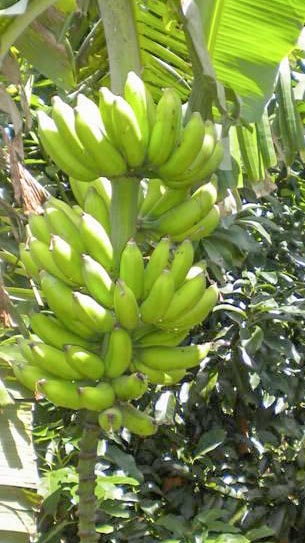
The Gingeli banana grows in all agro-climatic zones in Mauritius. However, it has a higher yield and a better fruit peel colour when grown in warmer areas. In superhumid zones, smaller bunches (less than 6 kg) are produced and the peel develops sooty-like patches on the outer surfaces. These patches do not have any negative effect on fruit taste.
Locally, the Gingeli banana is often confused with other dessert-type bananas such as Mamoul, Mamzelle or Faux Gingeli. A comparison between Gingeli and Mamoul type banana is given in the table below.
| Tree characteristics | - Tall and slender | - Tall and robust |
| - Very prone to wind damage | - Tolerates effect of wind better than Gingeli | |
| - Very susceptible to drought conditions | - Tolerates drought conditions | |
| Pest and disease susceptibility | - Very susceptible to Fusarium oxysporum race 1 and banana weevil borer | - Susceptible to Fusarium oxysporum race 1 and banana weevil borer |
| - Susceptible to Mycosphaerella Leaf Disease Complex | - Relatively tolerant to Mycosphaerella Leaf Disease Complex | |
| Yield parameters | - Small bunch size of about 7 kg | - Large bunch size of about 14 kg |
| - Produces few ratoons | - Produces many ratoons, each capable of producing good bunches when grown under good conditions | |
| Peel and pulp characteristics | - Deep green peel changing to canary yellow on ripening | - Green peel changing to yellow on ripening. Peel has a waxy silver appearance |
| - Pulp is soft with typical dry-texture | - Pulp is soft and has a sweet taste | |
| - Has sweet acid taste | . |
Pest and disease susceptibility
The Gingeli banana is very susceptible to the banana weevil (Cosmopolites sordidus) and to Fusarium oxysporum f. sp. cubense. This explains why the crop is short lived and needs to be renewed at relatively short intervals. Plants under stress (biotic and abiotic) tend to have brown spots in the pulp. In some cases the brown spots can be large and hard (corky) making the fruits unpalatable. The Gingeli banana is also susceptible to Mycosphaerella Leaf Disease Complex.
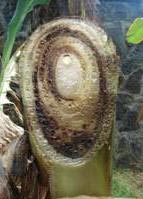
f. sp. cubense disease
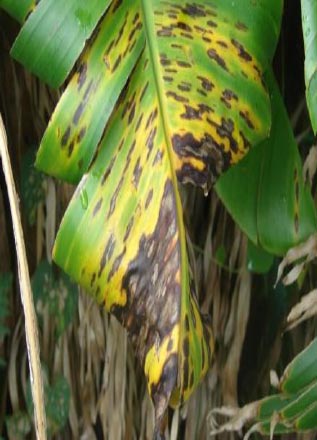
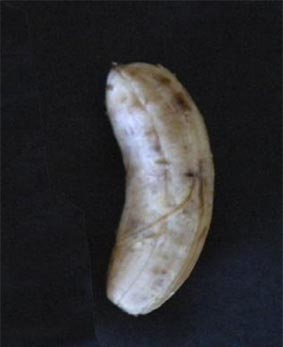
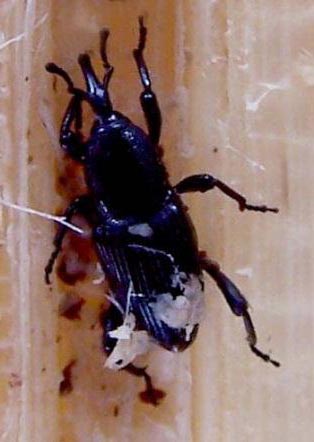
Ripening of Gingeli banana
Unlike the Cavendish bananas (Petite Naine, Ollier), under ambient conditions, a mature Gingeli banana starts to ripen naturally within 3 days after harvest. However, the Gingeli banana should be eaten when fully ripe (which is about 2 to 3 days after both the fruit and its stalk have attained its full yellow colour). Fruits that are at the right stage of ripeness, detach very easily from the crown. The ripe Gingeli is prone to finger drop and should be handled with care to avoid damage. An easy way to detect the optimum ripe stage is by plucking the fruit from the crown. Before this optimum ripe stage, the fruit has an unappealing starchy taste and should be relatively difficult to tear at crown level. The Gingeli banana should not be allowed to become fully round on the tree, as upon ripening, the peel of such fruits tend to split reducing its marketability.
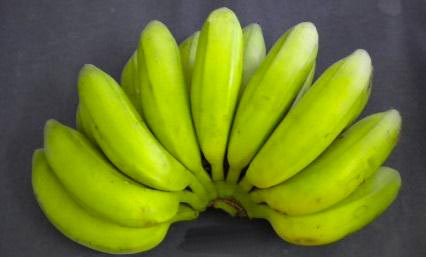
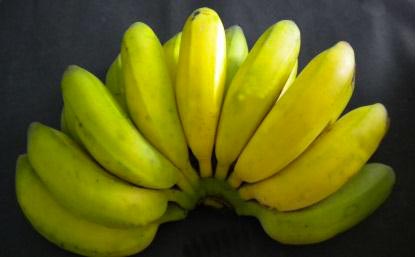
- Pedicel still green
- Fruits strongly attached to crown
- Fruits unfit for eating
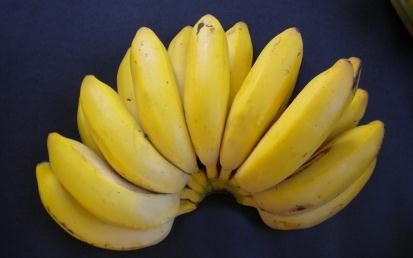
- Fruit, pedicel and crown yellow
- Fruit weakly attached to crown
- Fruits at right eating stage


